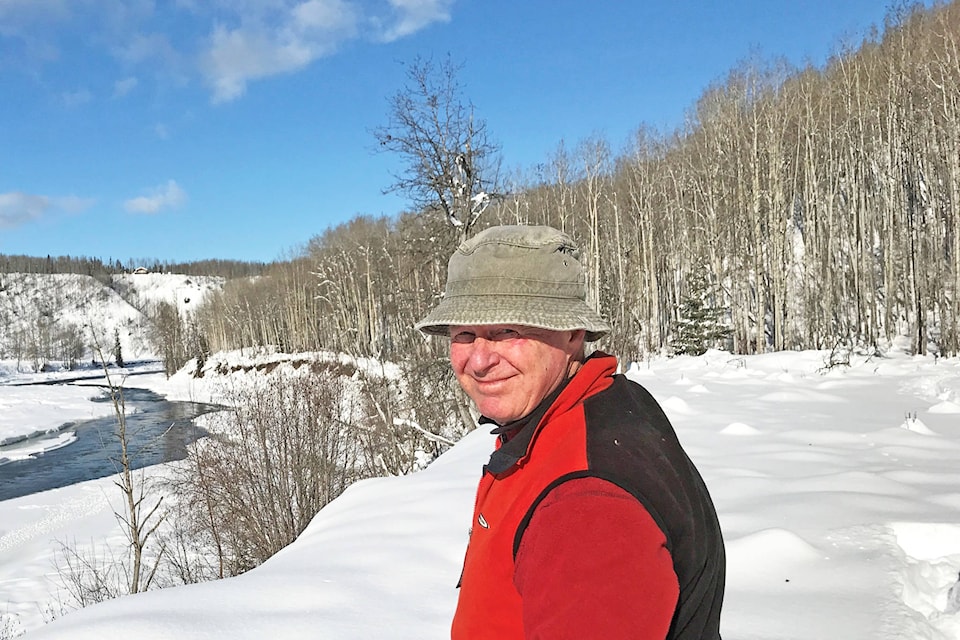Humanity has but 20-30 years to forestall runaway climate warming. We are urged to reduce greenhouse gas (GHG) emissions drastically, and to achieve net zero emissions by 2050. The imperative is to avoid carbon emissions now, not to rely on deathbed salvation through increased carbon uptake and storage 30 to 80+ years from now.
BC’s new Climate Change Strategy outlines many ways to reduce emissions, but it skates around the forest sector. Premier Horgan’s recent forest policy announcement didn’t even mention forestry’s key role in climate change mitigation. Forests fix and store huge amounts of carbon, and forestry is by far the biggest source of carbon emissions in BC. Yet the unruly dynamics of forest carbon are not fully reported in provincial emissions totals. The standard voodoo accounting treats forestry as carbon neutral, not counting its emissions as GHGs because in theory the trees will grow back. Even if it would take until 2100 and beyond for newly logged forests to recover their carbon stocks.
BC’s forest carbon strategy favours accelerated logging, more wood products, and more bioenergy. The mantra goes like this. Our forests will all soon burn up, fall to beetles, or blow down anyway. So we should quickly log much more, store the carbon in long-lasting wood products and landfills, use the logging debris for biofuel, and promptly reforest cutover areas to take up more carbon.
Questionable claims about forestry and climate change will probably be invoked in support of this strategy. Here are seven forest carbon myths, misconceptions, or oversimplifications to watch for.
1) Forestry is carbon neutral.
It could be but usually isn’t. Logging primary, mature and old forests and converting them to secondary, managed forests releases large and essentially unrecoverable amounts of carbon to the atmosphere, even when off-site storage in wood products is factored in.
2) Young forests take up more carbon than they emit and are ‘carbon sinks’; mature and old forests take up less carbon than they emit, are ‘carbon sources’, and contribute to climate warming.
The second part of that oversimplification is mostly false. Forests both absorb and release carbon throughout their life. The balance between uptake and emission determines whether a forest is a carbon sink or a source. Most old forests fix more carbon than they emit. Net carbon uptake in old forests does level off or decrease, but total storage increases. Old forests store much more carbon on site than do young post-logging forests.
3) Mature and old forests are impermanent carbon banks because inevitably the trees die; the forests will succumb to wildfire, insects, disease, drought, and logging.
Most BC forests will not simply burn up, die off or self-destruct in the next 30 years. Although all will eventually be replaced—suddenly or gradually—currently they are carbon banks and their stored carbon has much greater time value now and in the crucial next three decades than carbon uptake in contemporary juvenile forests or anticipated, post-logging storage recouped over the ensuing seven or more decades. Whether BC forests are a source or a sink at any given moment, they continue to store megatonnes of carbon as long as they still have trees on site—even if the trees are dead.
4) Trees will grow faster and forest productivity will be enhanced as climate continues to become warmer and wetter and as CO2 levels rise.
This is unlikely to be a widespread response in BC. Forest productivity will be constrained by: increasing moisture stress in many areas; more wildfires and problems with insect pests and diseases; short-lived effects of extra CO2; and reduced resilience of managed forests.
5) Production forestry can help slow global warming. When forests are logged, their stored carbon is transferred to long-lasting forest products, and the young replacement forests rapidly absorb more carbon.
This argument is flawed on several counts:
• Most forest carbon is lost as residues from harvesting and processing. Only a small fraction ends up in ‘longer-lived’ products.
• Wood products in practice often don’t last very long.
• Logging roads and landings remove much carbon storage potential.
• Producing lumber or shunting wood products to landfills does not fix carbon, rather it shifts some tree carbon elsewhere and releases to the atmosphere other carbon, from the forest and from burning fossil fuels. The net result is an increase in emissions, notwithstanding carbon uptake by the young forests.
6) Intensive, short-rotation ‘agroforestry’ can maximize carbon storage. Young forest plantations fix lots of carbon, and long-lasting wood products could substitute for fossil-fuel-intensive products.
In terms of carbon stewardship, agroindustrial forestry is a losing proposition.
Emissions from logging and forest management cannot be simply offset overnight or on paper by reforestation because it takes a long time for trees and forests to establish, grow, and mature. Intensively managed, short-rotation stands will not attain the original levels of carbon storage, thus incurring a permanent ‘carbon debt’. If wood products substitute for concrete and steel in construction, the presumed benefits would be cumulative and would exceed the carbon storage of an unlogged forest only after many decades, if ever.
7) Generating energy by burning woody biomass is both renewable and carbon neutral. Wood pellets help fight climate change.
Large-scale production of bioenergy from forests is not GHG neutral, nor is it sustainable or environmentally friendly.
Yes, wood is renewable but its regrowth takes several decades at least (mostly more than 75 years in BC). Wood burning also results in greater initial CO2 emissions because wood has low energy density (MJ/kg). To get the same amount of energy, you need to burn more woody fuel relative to fossil fuels, giving off more CO2. Burning wood pellets will not help reduce human-caused emissions of CO2 to the atmosphere by 2050.
Jim Pojar is a forest ecologist who worked for the BC Forest Service for 25 years.
